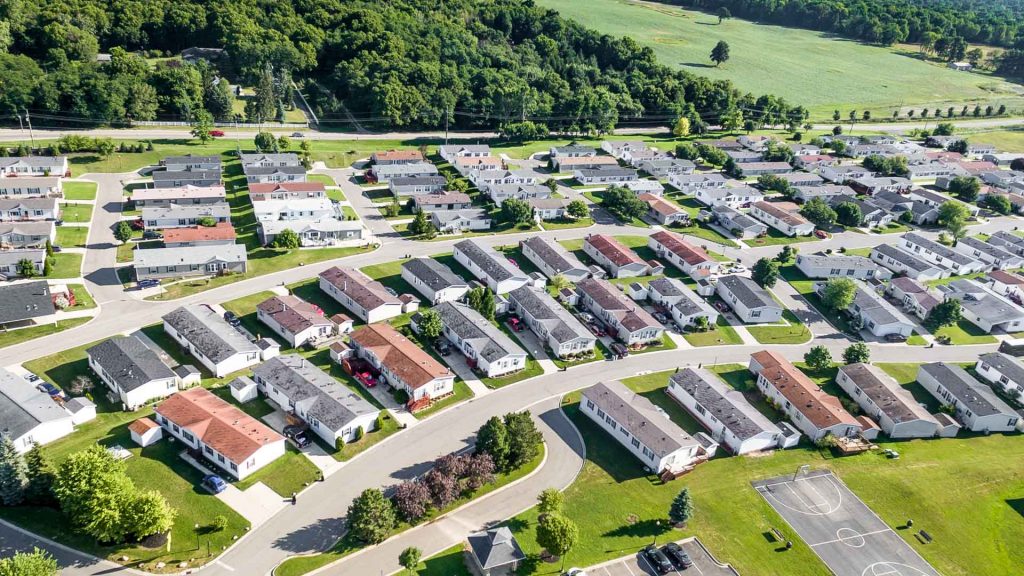Manufactured Home Community Upgrades Benefit the Industry as a Whole
One of the most difficult issues facing the manufactured housing industry today is the presence of many older, unattractive land-lease communities on the nation’s landscape.
Upgrading and improving these communities is important for several reasons. From an industry perspective, the negative impact these communities have on efforts to rezone land for future projects is legendary.
The “trailer park” image of some of these older communities often is the biggest argument against proposed modern community developments. From an investor perspective, many of the older developments are losing value because of their inability to accommodate newer, larger homes. And the negative image created by the aging asset is damaging for everyone.
How Do We Go About a Community Makeover?
Level I Renewals
So, how do we go about making a change for the better in these older communities?
The first step in the process is deciding the extent of the makeover. The activity could be as simple as a cosmetic enhancement of the existing facility. Or it could be as complex as a complete retrofit. This would require the removal of the existing homes and a planned redo of the community and infrastructure, which would accommodate newer, larger homes. This initial decision will determine the course of the actions to follow.
For decades, our firm has prepared upgrade documents for many projects, large and small, across the country. All of the projects have begun with a thorough assessment of the community. The first step in the process is the accumulation of the most complete maps and information on the community possible. In many cases, this involves digging deep into office closets, calls to the design engineer or planner or trips to the municipal or state agency to acquire archived copies of the approved construction plans. Conversations with managers and maintenance personnel further complete the base plans.
Often, drawings are unavailable. However, aerial photographs from government sources can be used to create base maps. Thorough site inspection and verification will complete the process.

A Picture is Worth a Thousand Words
Walk the site with a camera and notepad in hand. Photographs have a way of focusing our vision on negative images we have grown to accept. They can save additional trips to the site to refresh our memory of forgotten details. Maps, pictures and notes provide a valuable resource in times of community crisis and a foundation for the work to follow. They also become a base against which to measure progress.
It is unlikely that the community image would decline through time without the images of the homes and home-sites declining. Therefore, it is helpful to consider the need for community renewal on two levels:
- Items of owner/management responsibility
- Items of resident responsibility
With this in mind, create an upgrade plan with an emphasis on short-term goals to produce immediate visual results, and long-term goals to achieve the desired end result. In this way, management’s example of immediate visual improvement can be justification for required resident home and site improvements.
You must lead by example if you are to be successful in this effort.
Level II Renewals
Now that we’ve discussed Level I renewals, let’s move into something a little more involved: Level II renewals.
Level II candidates are older communities than most Level I renewals, and, as a result, have a higher percentage of older homes. Many have serious age-related difficulties with the homes and homesite improvements. Some of the older homes may be owned by the community and rented. In addition, many Level II communities have vacant sites to lease.
As a result, a Level I renewal is a required first step in the upgrade process. Upgrades to the housing stock and homesites are so important to the process. And resident cooperation and acceptance of the program are essential. Just as research was important to the upgrade process for the community-owned items, it also is important to do proper research to upgrade the home stock and homesites.
The first step in the process is to inventory the homesites and determine, in accordance with local and state regulations, the maximum-size homes that can be accommodated on the existing home sites. In making that determination, information regarding regulations for separation and lot coverage is important. Many states allow older communities to apply the requirements in force when the community was new. This can make a big difference in the size of home that can be placed on a given lot, as well the amount of change that might be necessitated.
The next step in the research process is to inventory the age, size, and condition of each home in the community; which homes are renter-occupied, if any, and which homesites are vacant. This information can be placed on a spreadsheet and color-coded on a plan.

Level II Upgrades Require a Longer Schedule
Unlike the Level I upgrade, which can take place in a relatively short time, upgrading the home stock most often takes longer. Planning for the home stock upgrade takes considerable effort and creativity. One method of accomplishing this task is to review the research information in order to determine which homes can remain in the community in their present location, which homes might be acceptable if moved to a new location, which homes should be removed from the community, and which homesites are vacant.
The goal of this process is to begin, one section of the community at a time, to improve the home stock. The most visible location should be the first upgrade. This is a way to produce an early improvement and stimulate interest in the process. It might be determined that the priority is an area near the entrance that has several vacant sites. Some newer homes might remain, and two or three homes could be moved or relocated.
First, arrangements to relocate homes would be made to assist residents in the least desirable homes. Or they could move up to a newer home. At the same time, new or acceptable replacement homes would be placed on vacant sites in the area near the front. Those homes are made for sale.
Special incentives are provided to encourage existing residents to “move up”, and to entice new residents to move into the community. A marketing effort keying in on the Level I portion of the community renewal program and the home sale incentives could be initiated. This process, over time, would result in the phased upgrade of the whole community home stock. Such efforts could be part of a much-publicized, total-community “Grand Reopening”; or part of a quiet, metered effort over time.










